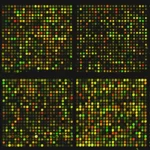
Building Bioinformatics Tools with Python
January 10, 2024Importance of Developing Bioinformatics Tools with Python
Leveraging Python for Custom Solutions
Python has become a prominent programming language in the field of bioinformatics due to its versatility, ease of use, and extensive libraries tailored for scientific computing. Developing bioinformatics tools with Python empowers researchers to create customized solutions, addressing specific requirements and overcoming limitations present in existing tools.
Enhanced Control and Flexibility
Creating bespoke bioinformatics tools offers researchers greater control over the features and functionalities. Unlike relying solely on pre-existing tools, developing in Python allows for tailoring tools to precise project needs, ensuring they provide accurate and reliable results. This flexibility is crucial when dealing with diverse biological datasets and complex research questions.
The Development Process: A Comprehensive Approach
Conceptualizing the Tool
Before diving into coding, it’s essential to clearly define the purpose and functionality of the bioinformatics tool. This initial conceptualization phase lays the foundation for a robust and effective solution.
Feature Wishlist
Listing all desired features and functionalities helps in creating a comprehensive roadmap for development. This step ensures that the final tool meets the specific requirements of the research project.
Logical Workflow Design
Mapping out the flow of data through the tool is crucial. Defining the steps required to transform input data into desired output provides a structured framework for implementation.
Implementing Features and Coding Workflow
This stage involves writing the actual code to implement the identified features. Python’s readability and extensive libraries for bioinformatics, such as Biopython and RDKit, simplify this process.
Deployment as a Web Application
Utilizing web frameworks like Streamlit or Shiny enables the deployment of bioinformatics tools as user-friendly web applications. This accessibility enhances collaboration and allows for widespread use by researchers, regardless of their programming expertise.
Prerequisites for Development
Foundation in Biology
A fundamental understanding of biology is essential for developing bioinformatics tools that effectively analyze and interpret biological data.
Python Proficiency
A strong grasp of Python programming is a prerequisite. Proficiency in using Python libraries for scientific computing ensures efficient tool development.
Conda Installation
Conda serves as a vital tool for managing Python libraries and environments. Its installation is a necessary step to create a controlled and reproducible development environment.
Example Application: Water Solubility Prediction
Utilizing Machine Learning for Prediction
The example application, focused on predicting water solubility using the SMILES notation, showcases the integration of machine learning into bioinformatics tools. The use of the RDKit library for computing molecular descriptors and a linear regression model exemplifies the versatility of Python in handling complex biological data.
Streamlit for Web Application Deployment
Deploying the water solubility prediction tool as a web application using the Streamlit library highlights the simplicity and efficiency of creating interactive and user-friendly interfaces with Python.
Conclusion: Empowering Researchers in Bioinformatics
Developing bioinformatics tools with Python emerges as a powerful strategy for researchers seeking tailored solutions to explore and analyze biological data. This process, encompassing conceptualization, feature development, logical workflow design, coding, and deployment, enables researchers to bridge gaps in existing tools and gain insights into intricate biological mechanisms. Armed with a foundational understanding of biology, Python proficiency, and Conda installation, researchers can embark on a journey of creating impactful bioinformatics tools to advance scientific discovery.
Future Directions and Collaborative Opportunities
As technology and biological research evolve, the landscape of bioinformatics continues to expand. Developing bioinformatics tools in Python positions researchers to adapt to emerging methodologies and integrate cutting-edge technologies seamlessly. The open-source nature of Python and its vibrant community provide opportunities for collaboration, enabling researchers to contribute to and benefit from shared advancements.
Integration of Advanced Analytical Techniques
Python’s rich ecosystem supports the integration of advanced analytical techniques, including deep learning and advanced statistical methods. Researchers can further enhance their tools by incorporating these techniques, opening avenues for more accurate and sophisticated analyses.
Community Engagement and Contribution
Engaging with the bioinformatics and Python communities offers a wealth of knowledge exchange and collaborative potential. Sharing developed tools, contributing to open-source projects, and participating in discussions enrich the collective understanding of bioinformatics challenges and solutions.
Best Practices for Bioinformatics Tool Development
Documentation and Code Repositories
Maintaining comprehensive documentation and utilizing version control systems like Git ensures transparency and reproducibility. Well-documented code and repositories facilitate collaboration, making it easier for other researchers to understand, use, and build upon existing tools.
User Interface Design and Accessibility
Considering user experience is crucial when developing bioinformatics tools. Python libraries like Streamlit or Dash allow for the creation of intuitive and accessible user interfaces, ensuring that tools are user-friendly and cater to researchers with varying levels of technical expertise.
Continuous Improvement and Adaptability
The dynamic nature of biological research requires bioinformatics tools to be adaptable. Regular updates, incorporating user feedback, and staying informed about advancements in the field ensure that tools remain relevant and effective over time.
Ethical Considerations in Bioinformatics Tool Development
Data Privacy and Security
When dealing with sensitive biological data, it is imperative to prioritize data privacy and security. Implementing robust security measures and adhering to ethical guidelines ensure the responsible development and use of bioinformatics tools.
Transparency and Bias Mitigation
Transparent reporting of methodologies and addressing biases in algorithms are essential ethical considerations. Striving for fairness and inclusivity in tool development promotes responsible and unbiased analyses of biological data.
Conclusion: Empowering the Scientific Community
In conclusion, the development of bioinformatics tools with Python not only provides researchers with tailored solutions but also contributes to the advancement of the entire scientific community. By embracing best practices, engaging in collaborative efforts, and considering ethical implications, researchers can create impactful tools that facilitate breakthroughs in understanding complex biological mechanisms.
As the field of bioinformatics continues to evolve, Python remains a versatile and powerful ally in the quest for unraveling the intricacies of life. Through ongoing collaboration and the responsible development of tools, researchers can harness the full potential of bioinformatics to drive innovation and discovery in the biological sciences.


















